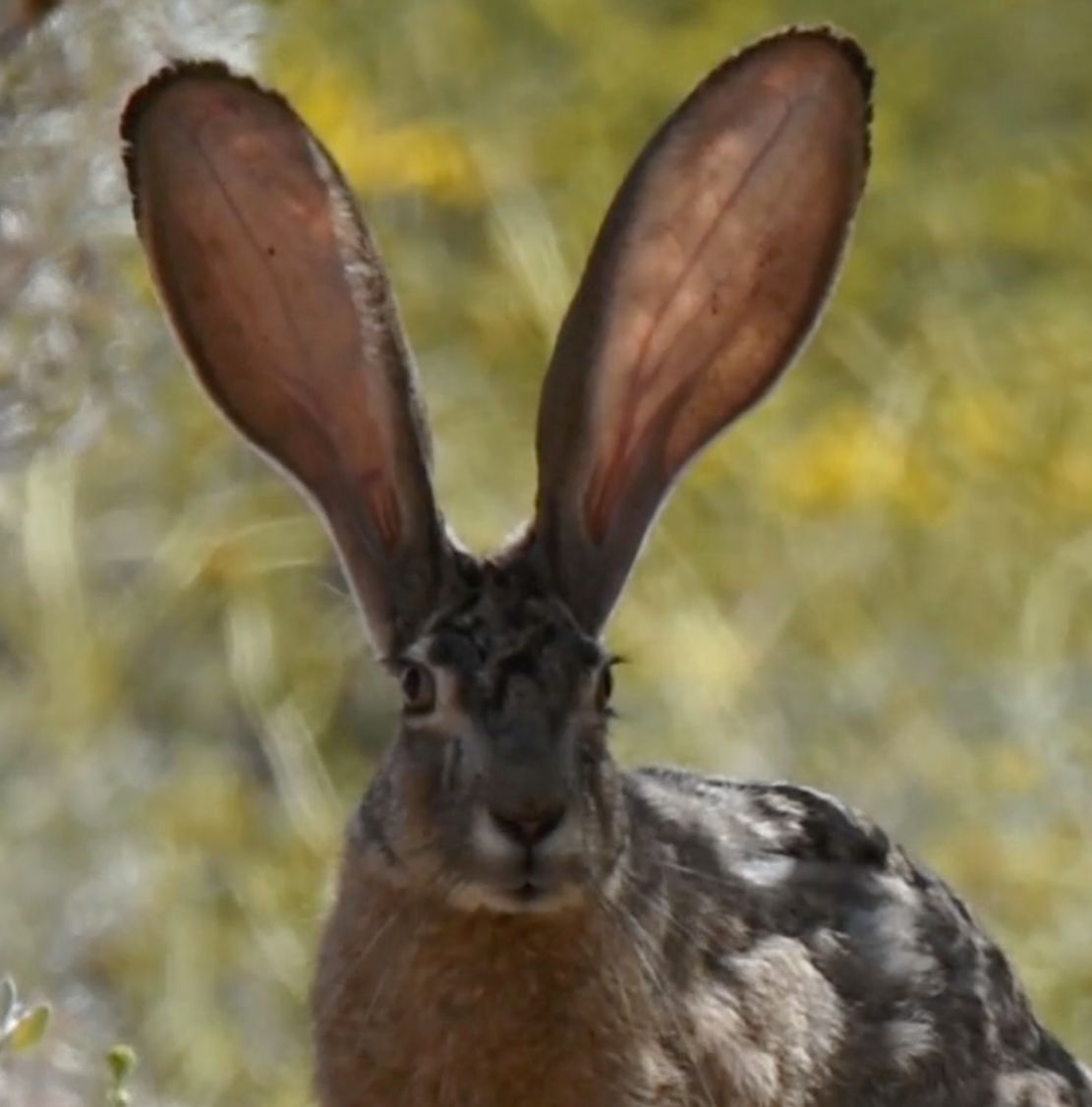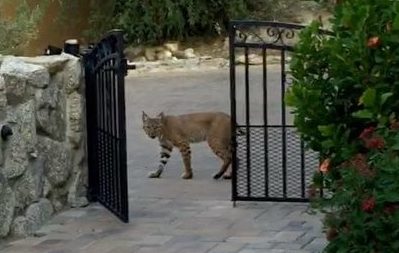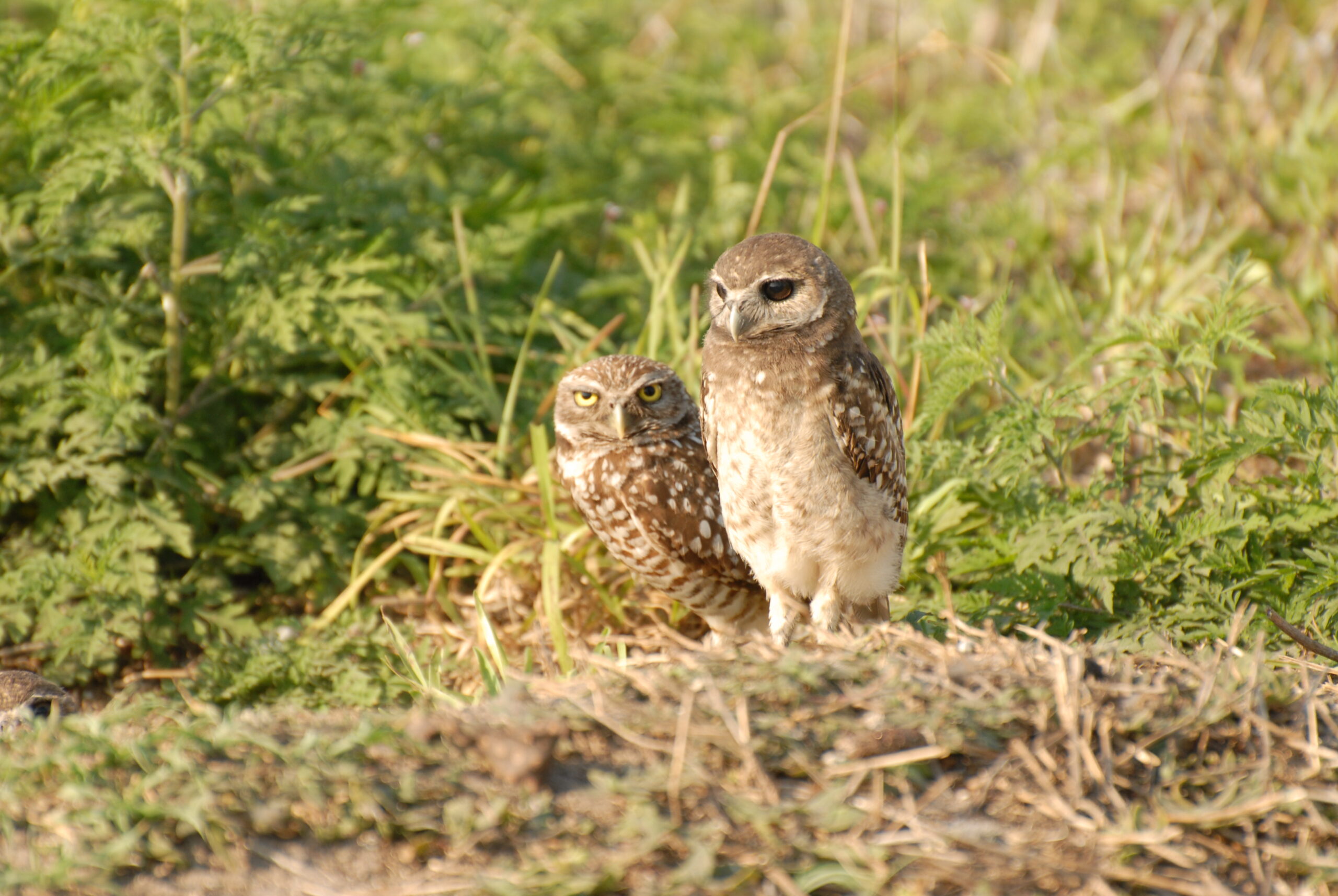
Black-tailed Jackrabbit
Jackrabbits are Not Rabbits
That flash of tall, black or white tipped ears you see racing and leaping in the desert may be called a jackrabbit but it’s not a rabbit, it’s a hare. Hares and rabbits are different: hares are usually bigger than rabbits; they have longer hind legs and ears; they prefer living in open areas; and their young are born covered in fur with eyes wide open. Also, mother hares do not build nests and the babies can run as soon as they are born.
Sonoran Desert Jackrabbits
The antelope and black-tailed jackrabbits are desert dwelling hares that live in Arizona’s Sonoran Desert. The antelope jackrabbit is the larger hare, weighing as much as 10 pounds. Its distinctly tall ears are edged in white and it has a patch of white fur on both flanks. When the antelope hare darts from a predator, the white on the flanks flash, resembling the flash of the pronghorn antelope.
The smaller black-tailed jack weighs about 5-8 pounds. It is more commonly spotted in the Sonoran Desert than the antelope jack, however, its range does not extend into the southern parts of this desert. This brownish jackrabbit features black-tipped ears and tail. Usually found in open flat areas, the male and female are similar in markings although the females are often slightly larger than the males.
To conserve energy, both hares are mostly nocturnal, resting in the shade during the day and moving about to feed at night. They often rest and forage in small groups. Jacks are herbivores and consume grasses, mesquite leaves, beans, clover and cacti. Technically, they do not consume surface water; instead, they obtain water in the plants they eat. They rely on their eyes and ears for protection and often stand on their back legs and stretch upward to view predators. Antelope jacks will sometimes freeze when they spot a predator but if necessary can run 30 plus mph and leap 15 feet in the air to escape. Black-tailed jacks rarely freeze; they prefer zigzagging to escape predation.
Finding Jackrabbits
If you want to see a jackrabbit, where could you go? Why the desert, of course. You may need binoculars because jackrabbits are elusive and difficult to spot despite their large populations. Below are parks with hiking and biking trails where you are likely to spot either or both of our charming hares.
- Apache Wash Trailhead (Phoenix)
- Boyce Thompson Arboretum (Superior)
- Desert Arroyo Park (Mesa)
- Lost Dutchman State Park (Base of Superstition Mountains)
- Saguaro National Park (Tucson)
- Organ Pipe Cactus National Monument (Ajo)
- Phoenix Sonoran Preserve (North Phoenix)
- South Mountain Park/Preserve (Phoenix)
- Superstition Mountains (surrounding Phoenix)
- Usery Mountain Regional Park (Mesa)
- Veteran’s Oasis (Chandler)
Black-tailed Jackrabbits at Veteran’s Oasis
Save money and support local business by booking directly through
Arizona Vacation Home Rentals
Phone/Text: 480.626.4072
Video and photo credits: © Gilbert S Grant








